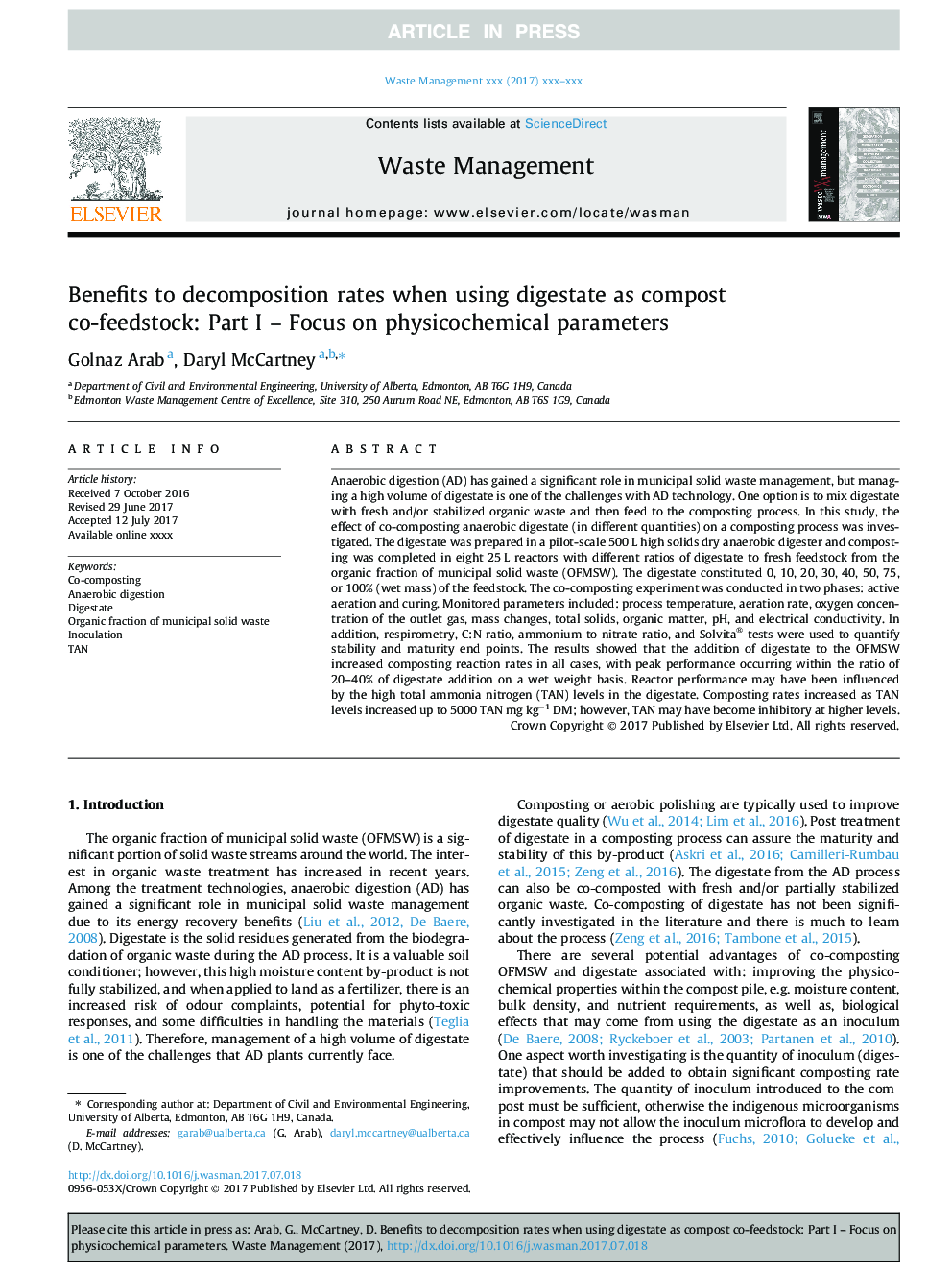| Article ID | Journal | Published Year | Pages | File Type |
|---|---|---|---|---|
| 5756557 | Waste Management | 2017 | 11 Pages |
Abstract
Anaerobic digestion (AD) has gained a significant role in municipal solid waste management, but managing a high volume of digestate is one of the challenges with AD technology. One option is to mix digestate with fresh and/or stabilized organic waste and then feed to the composting process. In this study, the effect of co-composting anaerobic digestate (in different quantities) on a composting process was investigated. The digestate was prepared in a pilot-scale 500 L high solids dry anaerobic digester and composting was completed in eight 25 L reactors with different ratios of digestate to fresh feedstock from the organic fraction of municipal solid waste (OFMSW). The digestate constituted 0, 10, 20, 30, 40, 50, 75, or 100% (wet mass) of the feedstock. The co-composting experiment was conducted in two phases: active aeration and curing. Monitored parameters included: process temperature, aeration rate, oxygen concentration of the outlet gas, mass changes, total solids, organic matter, pH, and electrical conductivity. In addition, respirometry, C:N ratio, ammonium to nitrate ratio, and Solvita® tests were used to quantify stability and maturity end points. The results showed that the addition of digestate to the OFMSW increased composting reaction rates in all cases, with peak performance occurring within the ratio of 20-40% of digestate addition on a wet weight basis. Reactor performance may have been influenced by the high total ammonia nitrogen (TAN) levels in the digestate. Composting rates increased as TAN levels increased up to 5000 TAN mg kgâ1 DM; however, TAN may have become inhibitory at higher levels.
Keywords
Related Topics
Physical Sciences and Engineering
Earth and Planetary Sciences
Geotechnical Engineering and Engineering Geology
Authors
Golnaz Arab, Daryl McCartney,
